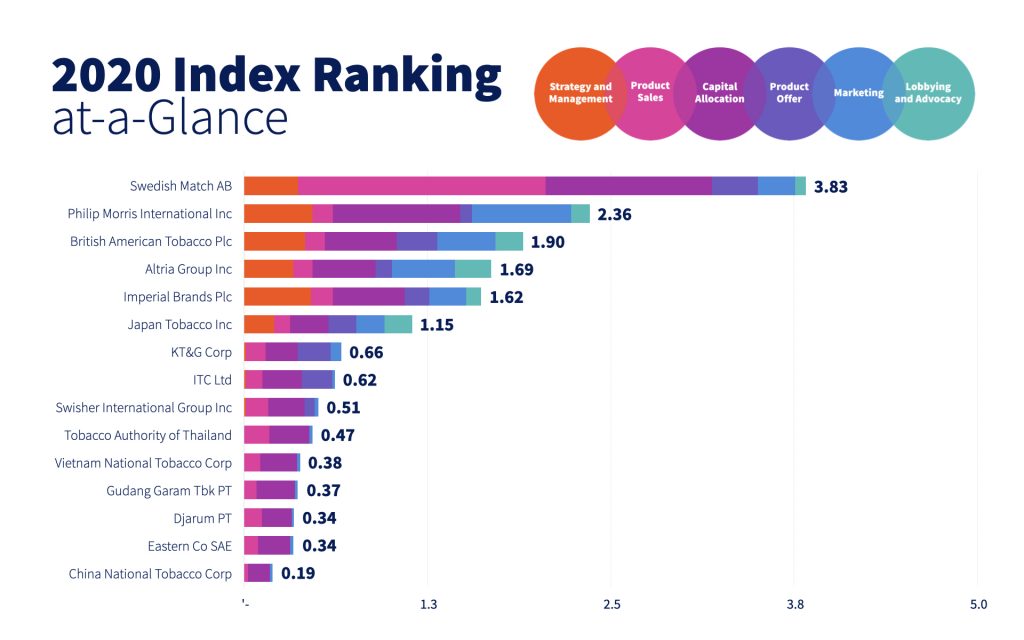I recently addressed the 2020 GTNF conference on the topic of “who is getting tobacco regulation right?”. My answer was blunt: at present, very few!
If we were, we would not have eight million deaths a year from tobacco use. Nor would we have 1.3 billion people still using tobacco products, most in a toxic combustible or dangerous smokeless form. The goal of a regulator should be primarily to reduce that harm in the fastest possible time. Sadly, this isn’t the case today.

First, most governments are failing us. If you look at the number of deaths that occur every single day, and the potential to get people to switch from products that increase their risk of dying, to those that substantially lower that risk and help them quit, we should be doing all we can to act faster and more decisively.
Compare this to how quickly we are responding to COVID-19. If we took the same approach as we are with this pandemic, with a goal of stripping away the regulatory barriers to getting life-saving products into the hands of people in the safest and fastest possible way, we’d see regulators accelerate their approval processes that now take years to months. We’d see regulators give assurance to the public in communications about the relative safety of nicotine and avoid the confusion that they promote with NGOs and the media.
There have been some bright spots. The FDA’s recent approach to both General Snus and IQOS is promising, these being the first tobacco products permitted to carry a claim of reduced exposure. The European Commission’s ban on menthol in cigarettes while keeping it in harm reduction products is a good step forward. And the UK government’s approach to integrating the use of tobacco harm reduction into cessation services at the primary health care setting is exemplary and rare among countries. However, we are a long way from having consistent regulation that uses good science to reduce the use of combustible tobacco as quickly as possible.
WHO, which really should be the centerpiece of putting it all together, is not making much progress. In fact, even though harm reduction is part of the very definition of tobacco control, and was when we started to work on the Framework Convention, they now actively discourage the use of reduced risk products, and support calls for bans on tobacco harm reduction products across the low and middle income countries made by the Bloomberg Philanthropies finance union[i]. Note that 80% of the beneficiaries of harm reduction and cessation live in LMICs!
In contrast and despite government inaction and in some cases, opposition, we are starting to see progress within some tobacco companies. Our recently released first version of the Tobacco Transformation Index ™, which assesses progress to end combustibles objectively among the 15 largest companies accounting for 90 percent of the world’s combustible cigarettes. Two companies are doing modestly well (sales of reduced risk versus harmful products has reached 44% for Swedish Match and 19% for PMI), four are doing sort of “middling” with the percent being between 3% and 5%, and the others are not really making any progress at all. All of the state monopolies, which together account for half of all cigarettes sold, have yet to even make a start!

Those who are out front need to be supported, but worryingly, much of the progress out there is being thwarted at a regulatory level.
If we extend the question of who is doing well further, we find a large group of committed academics across the world taking up the issue of harm research and science – often in the face of a lot of hostile pressure from their colleagues or funding agencies[1]. Their high quality science, epidemiology, economics and toxicology showing the benefits of harm reduction, will eventually win the day in terms of regulation and public perception.
Finally, I’d say the people who are making the most progress are smokers: many of them are actively seeking to reduce their own harm. Tens of millions of people are shifting out of combustible cigarettes into low risk and reduced risk products because they know, they feel, they see the benefits that they seek. And this is a group that we tend to often ignore. It is their voice that should matter most. It is their lives and health that are at stake.
So on balance I’d say that, unfortunately, the answer to the question, “Who is getting it right?” is very, very few. But it’s important to remind ourselves why this matters: smoking remains the single most preventable cause of death worldwide, and unlike decades ago, we sit on better solutions that if supported could save more lives than any other available public health intervention.
Wang, Vivian, “Bloomberg Takes on Vaping After Giving $1 Billion to Fight Tobacco,” New York Times, Sept. 10, 2019. https://www.nytimes.com/2019/09/10/nyregion/vaping-bloomberg-e-cigarette.html
Carroll DM et al., “Polarization Within the Field of Tobacco and Nicotine Science and its Potential Impact on Trainees,” Nicotine & Tobacco Research, August 2020, https://doi.org/10.1093/ntr/ntaa148
© 2023 Foundation for a Smoke-Free World. All rights reserved.